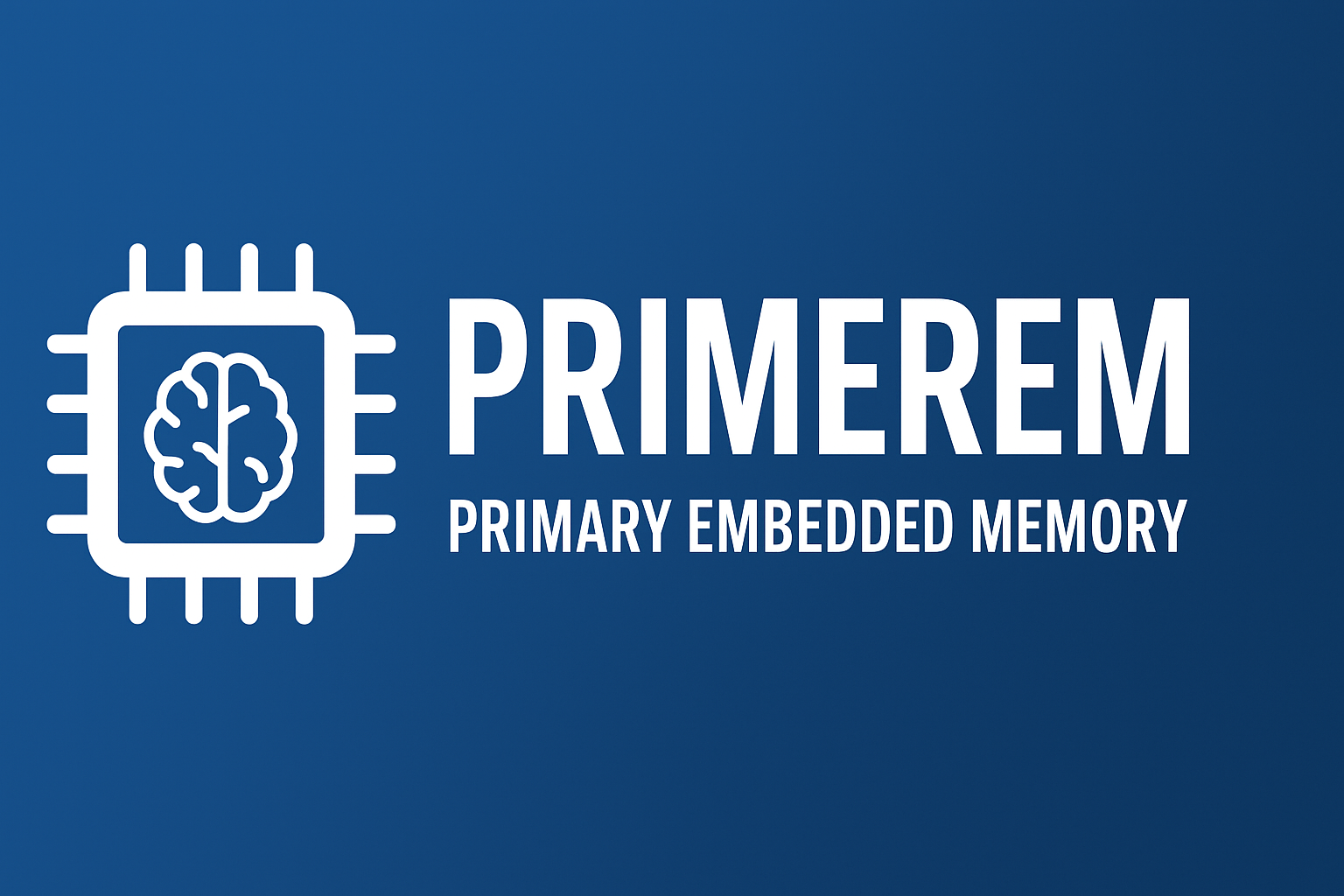
What Patients Should Ask Their Orthopedic Spine Surgeon
October 22, 2025
Understanding content://cz.mobilesoft.appblock.fileprovider/cache/blank.html — Meaning, Purpose, and Security Role in AppBlock
October 23, 2025Discover what Primerem means, how primary embedded memory shapes modern digital systems, its core components, benefits, and future applications. Learn how Primerem defines system logic, identity, and adaptive behavior.
also read: https://coomersparty.com/gaymetu-e/
Introduction
The digital world runs on data, logic, and memory. But at the heart of every intelligent system lies something deeper — its Primerem, short for Primary Embedded Memory. It is the hidden layer of logic and identity that defines how a system thinks, learns, and responds over time.
Primerem isn’t just about storing information. It’s about the system’s core self, the rules and reflexes that allow it to adapt without losing purpose. Imagine it as the DNA of a machine — guiding its reactions, maintaining stability, and ensuring it always “remembers who it is.”
Understanding Primerem (Primary Embedded Memory)
Primerem represents the foundational logic and parameters embedded within a system at its creation. These parameters determine how the system interprets input, learns from experience, and maintains internal consistency.
When a new software, AI model, or automated process is created, its Primerem acts as the first memory layer — the part that carries the system’s baseline knowledge, values, and identity.
For example:
- A robot’s Primerem might store its safety rules and motion boundaries.
- An AI’s Primerem may define what kind of data it can trust and how to resolve uncertainty.
- A security system’s Primerem may encode its default defensive responses.
In all cases, Primerem gives the system continuity, preventing it from drifting away from its original goals even as it evolves.
Why Primerem Matters
1. Stability and Reliability
Systems without a strong Primerem layer often break under pressure or lose consistency when faced with change. Primerem ensures that the foundation remains stable, even when other components evolve.
2. Self-Correction
Because Primerem carries reflexive logic — an understanding of what “normal” looks like — systems can recognize when they deviate and correct themselves automatically.
3. Identity Preservation
Every intelligent system needs an internal sense of “who it is.” Primerem provides that identity. It makes sure the system maintains the same purpose and principles, even after countless updates or interactions.
4. Ethical and Behavioral Alignment
Primerem can include embedded ethical rules or safety parameters, ensuring that automated systems behave responsibly and align with human intentions.
Core Components of Primerem
Primerem is not one single thing. It is a collection of interconnected layers that work together to give a system its foundation.
| Component | Description | Purpose in System |
|---|---|---|
| Core Logic Layer | Contains the base algorithms and reasoning patterns. | Guides decision-making and reflexive behavior. |
| Embedded Parameters | Initial rules, limits, and response thresholds. | Define how far the system can adapt or evolve. |
| Memory Seeds | Small historical data imprints from initial training. | Provide continuity and reference for change. |
| Reflexive Identity Model | Internal self-representation of the system. | Helps the system understand “what it is.” |
| Alignment Protocols | Built-in ethical or operational standards. | Keeps system aligned with desired outcomes. |
Each layer contributes to the overall Primerem architecture, ensuring the system remains adaptive yet stable.
How Primerem Works in Practice
Primerem operates quietly beneath the surface. It does not execute visible commands; instead, it shapes how the system processes and interprets those commands.
- Initialization Phase:
When the system starts, Primerem loads first, establishing base values, logic patterns, and behavioral constraints. - Operational Phase:
During operation, the system continuously compares its current state to the memory embedded in Primerem. This comparison helps detect anomalies or drift. - Learning Phase:
As the system learns or updates, the Primerem acts as a reference frame. It decides what new information can overwrite older patterns and what must remain constant. - Feedback and Reflex:
When errors occur, Primerem provides a fallback — a reflexive correction to restore system balance.
This structure mimics biological intelligence: a brain that remembers, reacts, and refines its behavior without losing its essence.
Applications of Primerem in Modern Technology
1. Artificial Intelligence
In AI, Primerem is used to define base reasoning rules before training begins. It ensures the AI model doesn’t develop unintended behavior or bias during learning.
2. Robotics
Robots rely on Primerem for reflexive control — the “instinctive” reactions that happen faster than conscious computation, such as stopping movement when encountering resistance.
3. Cybersecurity Systems
Security frameworks embed Primerem to store default defense behaviors, allowing systems to react instantly to unknown threats before human intervention.
4. Cloud and IoT Systems
Primerem helps distributed systems maintain consistent identity and logic across multiple devices, preventing data drift and misalignment.
5. Human-Machine Interaction
In AI assistants or customer service bots, Primerem holds the “tone” and “ethics” of interaction — ensuring the system behaves consistently with organizational values.
Advantages of a Strong Primerem Design
- Predictability:
Systems behave consistently, reducing errors and unpredictability. - Resilience:
Even when other modules fail, the core Primerem keeps the system grounded. - Efficiency:
Less re-training is required because the foundation remains intact. - Security:
Primerem can store emergency behaviors and fallback modes to ensure safe recovery. - Longevity:
Systems last longer and scale better because their core identity never fragments.
Primerem vs Traditional Memory
| Aspect | Traditional Memory | Primerem (Primary Embedded Memory) |
|---|---|---|
| Purpose | Store data and program states | Store logic, identity, and reflexes |
| Nature | Passive storage | Active behavioral framework |
| Adaptability | Fixed and reactive | Dynamic and self-correcting |
| Longevity | Can degrade over time | Maintains purpose across evolution |
| Example | RAM, hard disk | System’s embedded identity layer |
Traditional memory is like a filing cabinet. Primerem, however, is like a conscience — it guides how the system thinks and reacts rather than just storing facts.
Designing Systems with Primerem
To build a system that truly embodies Primerem thinking, follow this structured approach:
- Define Core Identity:
Identify what your system stands for — its goals, principles, and boundaries. - Embed Reflexive Logic:
Create embedded routines that let the system detect anomalies and self-correct. - Establish Ethical Alignment:
Hard-code basic principles that ensure the system acts responsibly and transparently. - Simulate Real-World Scenarios:
Test how the Primerem responds to unknown inputs and disruptive events. - Iterate and Evolve:
Refine the Primerem layer continuously, ensuring that updates enhance stability rather than erode it.
Future of Primerem
The concept of Primerem is still evolving, but its potential is immense. As AI and autonomous systems become more integrated into human life, embedded primary memory will be the key to ensuring these systems act safely, ethically, and consistently.
In the near future, Primerem may become a standard design layer in AI frameworks — not just for safety, but for creating systems capable of genuine self-awareness and long-term alignment with human values.
Frequently Asked Questions
- Is Primerem a physical component or software concept?
It’s primarily a software-architecture concept that defines logical and behavioral memory layers. - Can Primerem be updated?
Yes, but updates must preserve the core identity and alignment rules. - How is Primerem different from firmware?
Firmware controls hardware functions; Primerem controls cognitive and logical behavior. - Does Primerem exist in current AI models?
Some advanced AI systems use early forms of Primerem through ethical and behavioral alignment frameworks. - Can Primerem prevent AI bias?
It helps reduce bias by embedding predefined ethical and logical rules. - What industries use Primerem concepts?
AI development, robotics, cybersecurity, autonomous vehicles, and healthcare systems. - Is Primerem related to human memory models?
Conceptually yes — it mirrors how humans have instinctive, embedded responses. - Does Primerem make systems conscious?
Not conscious, but it gives them a structured sense of self and purpose. - Can Primerem improve data security?
Yes, it can embed defense reflexes that trigger protective measures instantly. - How can developers implement Primerem?
By designing a core logic module that defines identity, ethics, and adaptive rules before coding other layers.
Conclusion
Primerem — the concept of Primary Embedded Memory — marks a major step in how we design intelligent systems. It’s the invisible framework that defines a machine’s identity, stabilizes its logic, and allows it to evolve without chaos.
By integrating Primerem into system architecture, developers can create digital entities that are resilient, ethical, adaptive, and self-aware. As technology continues to advance, Primerem will become not just an advantage but a necessity for building systems we can trust and rely on.




